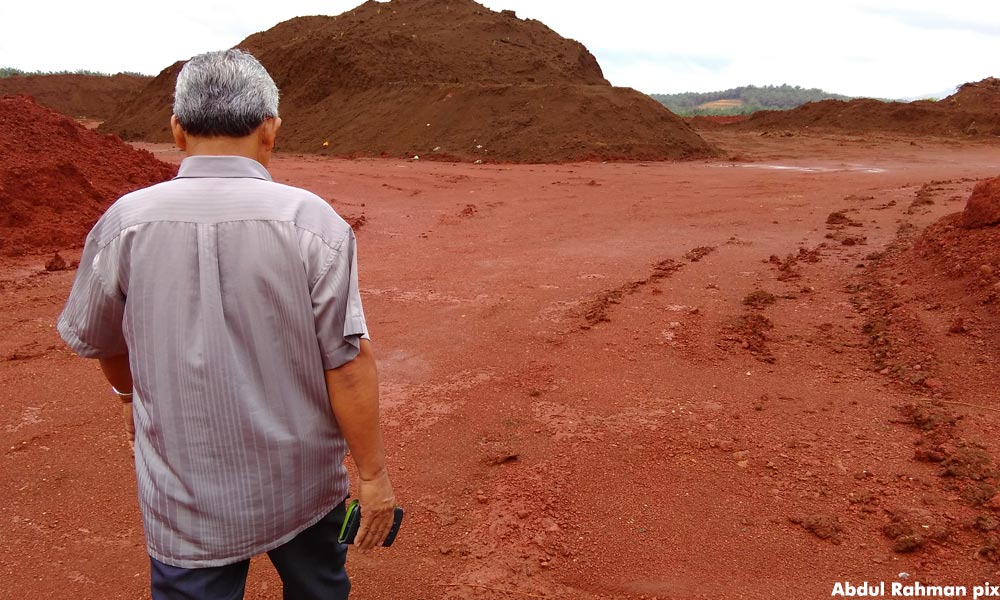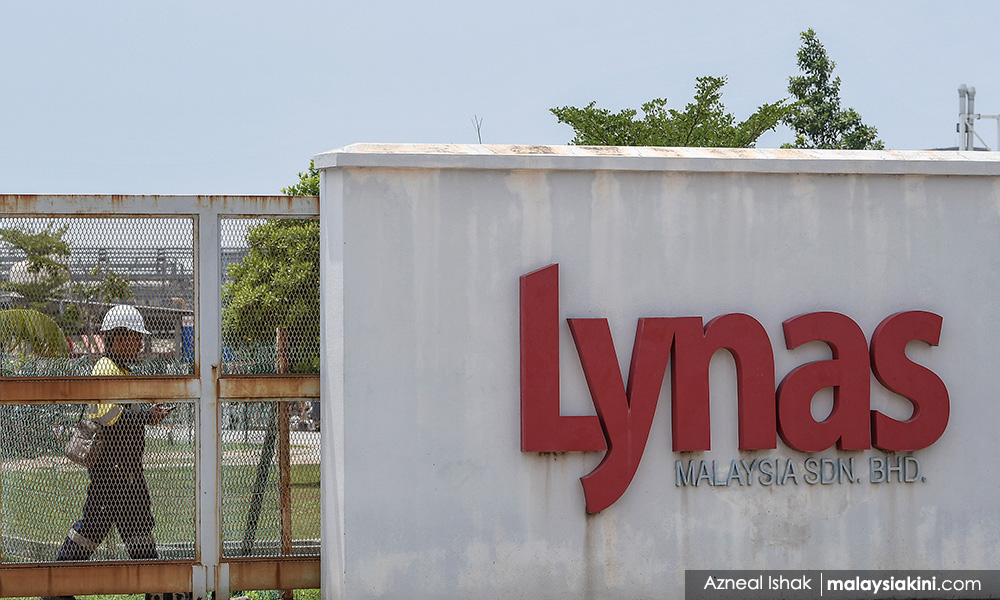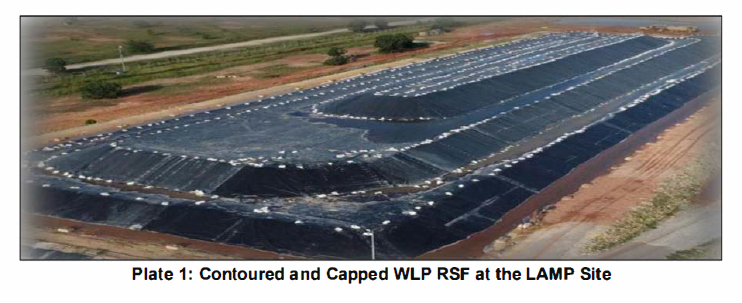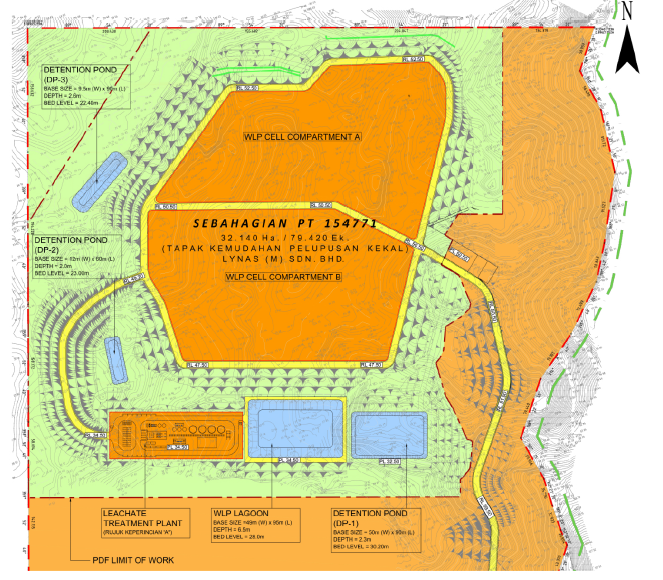# Malaysia's Wong Kai Hui is 2021’s Thomson Foundation Young Journalist Award winner, and one of the reports she made is as follows...2021 Thomson Foundation Young Journalist Award - Malaysia's Wong Kai Hui - CONGRATULATIONS
While much attention was on the rare earth firm, what is taking shape at Bukit Ketam is much bigger than Lynas, and a firm linked to Pahang royalty has been tasked to set the plan in motion.
A total of 202.35 hectares, the size of 283 football fields, has been carved out of the Bukit Kuantan permanent forest reserve, to be converted into a Multi-Category Industrial Scheduled Waste Disposal Site (MCISWDS).
Lynas' PDF will only occupy 58.25 hectares or 29 percent of the overall site.
Gading Senggara Sdn Bhd (GSSB), a private firm linked to Pahang royalty, will be the contractor of the MCISWDS. Likewise, Lynas appointed the same company to build its PDF there.
GSSB, founded in July 2012 as Puncak Trillium Sdn Bhd, changed to its current name in December 2014.
A Malaysiakini check on the firm with the Companies Commission of Malaysia (CCM) revealed that the majority shareholder, with a 50 percent stake, is Pahang Regent Tengku Hassanal Ibrahim Alam Shah.
The second-largest shareholder is Gading Group chief executive officer Johari Harun, who is also the Bentong Umno vice-chief. He controls a 40 percent stake.
The remaining 10 percent is held by one Mohd Firdaus Redzuan. The company information is based on records it submitted to the CCM as of Oct 5, 2020.
The company's directors are Johari, Firdaus, and one Ahmad Radzi Zaini.
Environmental struggles
The mega-contract is another project that the people of Kuantan have to deal with as the town struggles to balance the environment and industry over the last decade.
The path from town to the future MCISWDS site is flanked by oil palm plantations with road tainted with red dirt, a reminder of the rampant bauxite mining in 2015 that left parts of Kuantan covered in red dust.

The mining frenzy, which saw oil palm smallholders giving up their land for mining in exchange for stacks of cash, eventually forced the federal government to intervene by imposing a moratorium on exports from the Kuantan port.
The MCISWDS itself was a byproduct of environmentalists protesting against Lynas' Advanced Material Plant in Gebeng, Kuantan since 2010.
Its processing of rare earth material at the facility produces toxic waste, including radioactive Water Leach Purification (WLP) residue.
While the waste has low radioactivity, its build-up over the years raised concerns.
The previous Pakatan Harapan government, which as the opposition had supported protests against the facility, unsuccessfully tried to get the waste sent back to Mt Weld in Western Australia, where the original rare earth was mined from.
However, Lynas Malaysia agreed, as part of its new licensing condition, to move its cracking and leaching operations, which produces the radioactive waste, back to Western Australia.
The waste already produced here since 2012 remains a problem and this is where the PDF comes in.
But the MCISWDS project is significantly larger than Lynas' PDF and it is not yet clear what other forms of waste will be stored at the facility.
A waste dumpsite until 2119
The MCISWDS in Pahang will hug the state's border with Terengganu. Adjacent to the site, on the Terengganu site of the border, is a vast durian plantation.
Information on the MCISWDS is still limited but some details can be gleaned from the Environmental Impact Assessment (EIA) report on Lynas' PDF, located within the site.
According to the EIA, the Pahang government, Kuantan Municipal Council, Land Office, Pahang Forestry Department, Pahang Public Works Department, Terengganu government, Syarikat Air Terengganu, and Kemaman Municipal Council have no objections to the Lynas PDF.
Supporting documents also revealed that the Pahang government already excised the MCISWDS area from the Bukit Kuantan Forest Reserve, which was gazetted as a permanent forest reserve since 1962.
The forest in the project site will be felled before construction begins.
Under Section 13 of the National Forestry Act 1984, the "state authority" can excise a permanent forest reserve by publishing a gazette specifying the extent of such land and a fixed date.
The interpretations of Acts 1948 and 1967 defines "state authority" as the ruler of a state.
The accompanying land grant in the EIA showed the site is now listed for industrial use for a period of 99 years - from Aug 14, 2020 until Aug 13, 2119.

While the waste, at least for Lynas, will be stored there permanently, the EIA said the site could still be converted into a public recreational park in the future.
According to the Lynas PDF project implementation timeline, the land clearing was scheduled to start in the middle of this month.
GSSB had applied to the Pahang Forestry Department for the land clearing in October 2020.
The Pahang Forestry Department has informed the Department of Environment last November that it did not have any objections, as long as GSSB left the forest surrounding the project site untouched.
Malaysiakini has contacted GSSB for a response and requested further information about the MCISWDS project.
Leaflet map by Andrew Ong and Wong Kai Hui. Malaysiakini, 17/2/2021
For years, they've seen their quality of life improve thanks to income from oil palm plantation programmes which the government initiated in the 1970s. The programmes transformed the local population into smallholders who have benefited for generations.
Their way of life was however disrupted in the last decade following a brush with industrial greed that left the landscape in the area scarred with red ditches from bauxite mining.
They were able to return to some degree of normalcy following a moratorium on bauxite mining since 2016 to allow for proper regulations to be enacted.
However, the community is set to have another brush with big industry as radioactive rare earth waste will end up a stone's throw away from where they live.
The name "Lynas Malaysia" is not unfamiliar to the local community but with the firm's rare earth processing plant located 30km to the east in Gebeng, it has never been a real concern. Instead, it was more of an urban issue for the folks in Kuantan.
Unfortunately, a plan to build a massive industrial waste facility in Bukit Ketam and the relocation of Lynas' waste from Gebeng mean the rare earth firm's toxic byproducts will be just three kilometres away from the nearest Felda settlement - Felda Neram Satu.
Other Felda settlements within a 10km radius of the waste facility include Felda Bukit Kuantan, Felda Bukit Sagu and Felda Bukit Goh.
The Environmental Impact Assessment (EIA) for Lynas' Permanent Disposal Facility (PDF) revealed that it would be part of a larger Multi-Category Industrial Scheduled Waste Disposal Site (MCISWDS) that plays host to more than just Lynas' waste.
Monitoring for 100 years
The Lynas component, which makes up about one-third of the site, will require radiological and environmental monitoring for at least 100 years.
Yesterday, Malaysiakini reported that the proposed MCISWDS in Bukit Ketam, the size of 283 football fields, has been carved out of the Bukit Kuantan Forest Reserve.
A private firm that is majority-owned by Pahang Regent Tengku Hassanal Ibrahim Alam Shah will be the contractor of the MCISWDS.
Even though the EIA report for Lynas' PDF has gone on a month-long public display since Jan 27, there was little attention over the mega project.
Affected communities don't normally pore over voluminous EIA reports until the impact becomes apparent.
The situation was not unlike the Lynas Advanced Material Plant (Lamp) in Gebeng, which started construction in 2010. Since 2008, Kuantan MP Fuziah Salleh has been the lone voice in Parliament to raise concerns about the Lamp.
The community only started to notice and organise themselves after the Lamp was approved and already under construction.
After years of protests, Lynas finally agreed to move its cracking and leaching process, which produced the radioactive Water Leach Purification (WLP) residue, back to Western Australia by July 2023. It was part of an agreement with the Pakatan Harapan government in 2019 in exchange for extending its operating licence.
Even though the radioactivity of the WLP is considered low, there has been a build-up of the residue since 2012 and more will continue to accumulate until 2023. This is where Bukit Ketam comes in.

The EIA report estimated that by September 2023, Lynas would have accumulated 1.037 million cubic metres of WLP, enough to fill 415 Olympic swimming pools.
Treated runoff released into river
At present, they are stored at Lynas' factory at Gebeng, near Kuantan Port. They will be transported to the new PDF site farther inland when it is ready.
Lynas' PDF will occupy 58.25ha of the 202.35ha MCISWDS.
The Lynas PDF will include two storage cells, a lagoon, leachate treatment plant (LTP), detention pond and administrative buildings, according to the EIA report prepared by AGV Environment Sdn Bhd.

The cells are for the permanent storage of Lynas' WLP, while the detention pond is to temporarily store uncontaminated stormwater and allow for controlled release to avoid flooding. The lagoon is to store contaminated stormwater that came in contact with the WLP.
The PDF cells, which are essentially huge holes carved out of the ground and reinforced with containment material, will be 1.35 million cubic metres in size, equivalent to 540 Olympic swimming pools.

One of the most critical components is the LTP, which will treat stormwater tainted by WLP, before releasing the treated water into Sungai Ara.
Sungai Ara is connected to Sungai Riau that flows into Sungai Kuantan, where the Kobat Water Intake Station is located. The water intake station provides water to 781,000 users in Kuantan.
"The composition of active surface runoff from the PDF cells is not suitable to be released to the tributaries of Sungai Ara. Therefore, it will be contained in the WLP Lagoon before being conveyed to the LTP for treatment.
"The effluent will be discharged into the tributaries of Sungai Ara, which are ephemeral in nature," the EIA report said.
Clearing of the site is set to start in the middle of this month, and the PDF is expected to be completed by September 2024.
The public can view the full EIA report here. They can also make formal feedback here.





No comments:
Post a Comment